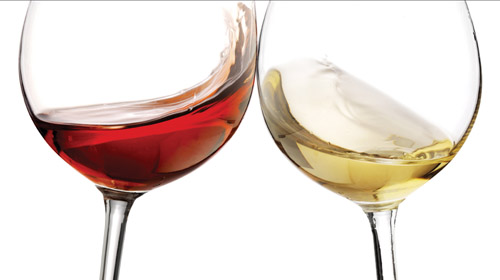Napa and Sonoma counties are remarkably similar on paper. They appear as next-door neighbors sharing a mountain range on the map, and rivers, valleys and fertile agricultural areas define the topography of both. Yet each has its own distinct character, drawing visitors from around the world, seeking a taste of an enviable lifestyle. The big question for travelers is which one to choose. Is it a coin toss, or are they so different that selecting one over the other is easy?
On the surface
With the Mayacamas Mountains on the west and the Vaca Mountains on the east, Napa County is just five miles at its widest point, and it extends 30 miles from the Lake County line in the north to its southern-most tip. It measures 789 square miles, and the winding Napa River runs downstream through the middle of the valley to San Pablo Bay. Its favorable location gives it a balmy Mediterranean climate, making it ideal for growing wine grapes and visiting year-round.
Sonoma County, comprised of 1,768 square miles, is more than twice the size of Napa, and 60 miles of rugged Pacific coastline, valleys, plains, forests, rivers and mountains create a diverse region with a variety of microclimates that include fog and rainfall, as well as a range of temperatures. It has areas conducive to growing wine grapes, but dairies, orchards and coastal activities also thrive in Sonoma County, and it too is a desirable place to visit any time of year.
Taste sensations
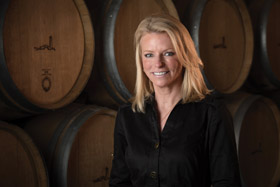 Wine Country is a renowned destination, and picturesque vineyards and fine wines are unquestionably big attractions for visitors. Sonoma has 17 separate wine-producing regions—American Viticulture Areas—and Napa has 16, adding up to hundreds of wineries and tasting rooms. Monty and Sara Preiser publish the Preiser Key to Napa and Southeastern Sonoma—guides which include, among full winery data bases, horizontal maps going from east to west that show every restaurant and winery in Napa and southeast Sonoma. To make it user-friendly, the maps include dots to pinpoint the entrances, and the guides contain educational articles, such as etiquette in a tasting room, what appellation means, the size of bottles and how to find a varietal. Monty Preiser finds Napa and Sonoma counties quite similar, although each area has its own individual characteristics. He considers Napa sophisticated and somewhat urbanized and Sonoma more relaxed and rural, but regardless of the location, when it comes to tasting wine, he says, “Once you get there it’s a winery.”
Wine Country is a renowned destination, and picturesque vineyards and fine wines are unquestionably big attractions for visitors. Sonoma has 17 separate wine-producing regions—American Viticulture Areas—and Napa has 16, adding up to hundreds of wineries and tasting rooms. Monty and Sara Preiser publish the Preiser Key to Napa and Southeastern Sonoma—guides which include, among full winery data bases, horizontal maps going from east to west that show every restaurant and winery in Napa and southeast Sonoma. To make it user-friendly, the maps include dots to pinpoint the entrances, and the guides contain educational articles, such as etiquette in a tasting room, what appellation means, the size of bottles and how to find a varietal. Monty Preiser finds Napa and Sonoma counties quite similar, although each area has its own individual characteristics. He considers Napa sophisticated and somewhat urbanized and Sonoma more relaxed and rural, but regardless of the location, when it comes to tasting wine, he says, “Once you get there it’s a winery.”
“I don’t see the counties as being very different; I see them as being very alike,” he adds, and so it would be difficult to choose between the two. Wine and food are important considerations, though, and if pressed, he’d give the nod to Napa, because it has more wineries, a greater variety of wines, excellent choices for dining and entertainment. “I believe you can spend much more time in Napa and get more for your visit,” he says.
For many people, Napa Valley and wine are inseparable, so a wine-tasting experience is a must. Every visit should begin at the Napa Valley Welcome Center, on Main Street in downtown Napa, says Angela Jackson, director of media relations for Visit Napa Valley. Friendly staff members can make suggestions based on one’s wine preferences, and they advise making reservations, even for visits on the same day. Jackson explains that 90 percent of wineries require reservations, and that’s so they can prepare for guests, greet them and make sure they have the best possible experience. In addition, some wineries have permit restrictions limiting the number of guests who can visit each day. She also advises people to pick an area, maybe Napa and Yountville, and spend a day exploring each, and then visit other areas the next day, such as St. Helena and Calistoga. “To fully experience the uniqueness of each town, it’s best to not see or do too much in one day,” she says. In addition, for first time visitors, she recommends visiting Robert Mondavi Winery in Oakville, which was established in 1966 and was at the forefront of developing California’s reputation as one of the world’s finest wine-producing areas.
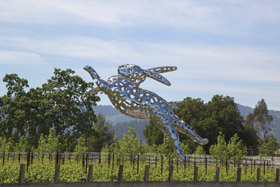 When Robert Mondavi opened the winery, it was the 26th in the valley, in contrast to more than 500 today, and wine wasn’t prominent in the United States the way it is now. “People consumed beer, spirits and coffee, but not wine,” says Clay Gregory, president and CEO of Visit Napa Valley. He explains that Mondavi had a vision for Napa that no one else had, and he played a crucial role in shaping its identity as a destination, as he spread the image of the lifestyle that could come with understanding great food and wine. “He didn’t say his wines were the best. He wanted to make wines that are in the company of the best wines in the world,” says Gregory. Mondavi’s desire to make the best things possible led to today’s entrepreneurship, which includes great chefs, farms, artists and hoteliers, as well as wine, in a welcoming environment. “There’s a casualness to it—a casual elegance,” he says.
When Robert Mondavi opened the winery, it was the 26th in the valley, in contrast to more than 500 today, and wine wasn’t prominent in the United States the way it is now. “People consumed beer, spirits and coffee, but not wine,” says Clay Gregory, president and CEO of Visit Napa Valley. He explains that Mondavi had a vision for Napa that no one else had, and he played a crucial role in shaping its identity as a destination, as he spread the image of the lifestyle that could come with understanding great food and wine. “He didn’t say his wines were the best. He wanted to make wines that are in the company of the best wines in the world,” says Gregory. Mondavi’s desire to make the best things possible led to today’s entrepreneurship, which includes great chefs, farms, artists and hoteliers, as well as wine, in a welcoming environment. “There’s a casualness to it—a casual elegance,” he says.
Wine is also at the top of the list for many visitors to Sonoma County. However, the wineries are more widespread, so travelers should do their research beforehand for information on winery trails (sonomawine.com), and Sonoma County (sonomacounty.com) for different types of winery experiences, advises Barbara Cox, director of marketing and communication, Sonoma County Vintners. They can also stop in at the California Welcome Center in Santa Rosa’s Historic Railroad Square to get tips for making the most of wineries, as well as craft-beer brew stops and other activities.
Much of Sonoma County is farmland, and herds of cattle share the landscape with vineyards and fruit trees. Farm-to-table food is trendy, but farmers have worked the land for generations. “We just call it eating, because that’s what we’ve always done here,” says Birgitt Vaughan, public relations manager for Sonoma County Tourism. She reports that chefs love Sonoma County because of the four-season growing, and farmers’ markets are popular, with one somewhere in the county every day. The result is fine restaurants and an appreciation for good food.
 Several elements of Sonoma’s food culture come together at the SHED in Healdsburg, where people gather to eat, shop, learn and take classes focused on local food. It features the only fermentation bar in the country, with house-made Kombucha and shrubs—old-fashioned porch drinks—made from local fruit.
Several elements of Sonoma’s food culture come together at the SHED in Healdsburg, where people gather to eat, shop, learn and take classes focused on local food. It features the only fermentation bar in the country, with house-made Kombucha and shrubs—old-fashioned porch drinks—made from local fruit.
Food ranks high for most visitors to Napa too, with Michelin Star restaurants such as La Toque and the French Laundry attracting people with creative cuisine showcasing fresh local products. “It’s a perfect region for growing nearly everything,” says Jackson. Oxbow Public Market, overlooking a bend in the Napa River, is a foodie’s destination, and a stone’s throw away, the Culinary Institute of America at Copia is one of Napa’s newest attractions. The CIA at Copia has a full calendar of tasting events and interactive demonstrations, and they’re for all ages and interests. Family Funday takes place every Sunday and gives children a chance to enjoy Napa’s food scene. The kid-friendly theme of the class on the last Sunday of October, for example, is Spooky Treats. Copia and Oxbow Public Market are on First Street within easy walking distance of downtown, which has become one of Napa Valley’s hot spots. “Napa is such a walkable town. You can just leave your car at your hotel and walk to nearby restaurants, shops and tasting rooms,” says Jackson.
Beyond vineyards
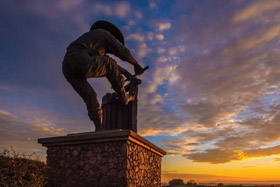 Wine might predominate, but not everyone is a wine drinker, and Napa has a variety of activities to suit all tastes. A hot-air-balloon ride for example, is an amazing experience. “It’s such a peaceful way to see the Napa Valley and start your morning,” says Jackson. And for visitors seeking an outdoor activity, “Hiking Lake Hennessy is absolutely gorgeous,” she adds. She also suggests a day at Lake Berryessa and seeing Napa Valley by bicycle or on foot on the Napa Valley Vine Trail, which is dedicated for walkers and cyclists and will eventually extend 47 miles from the Vallejo Ferry to Calistoga. “We as a valley have many things going on,” she says. The award-winning film Lion had its U.S. premiere at the Napa Valley Film Festival, which takes place every November and is small, but has exciting events. And the Napa Truffle Festival, a highlight in January, includes foraging for mushrooms, cultivation seminars and dog-training demos, as well as meals featuring truffles.
Wine might predominate, but not everyone is a wine drinker, and Napa has a variety of activities to suit all tastes. A hot-air-balloon ride for example, is an amazing experience. “It’s such a peaceful way to see the Napa Valley and start your morning,” says Jackson. And for visitors seeking an outdoor activity, “Hiking Lake Hennessy is absolutely gorgeous,” she adds. She also suggests a day at Lake Berryessa and seeing Napa Valley by bicycle or on foot on the Napa Valley Vine Trail, which is dedicated for walkers and cyclists and will eventually extend 47 miles from the Vallejo Ferry to Calistoga. “We as a valley have many things going on,” she says. The award-winning film Lion had its U.S. premiere at the Napa Valley Film Festival, which takes place every November and is small, but has exciting events. And the Napa Truffle Festival, a highlight in January, includes foraging for mushrooms, cultivation seminars and dog-training demos, as well as meals featuring truffles.
Though visitors frequently focus on wine and food, they choose Sonoma County for other reasons as well, says Vaughan. “People come to visit for our scenic beauty. There’s so much more to explore than great wine,” she says. “We get a lot of cyclists here. They go toward the coast,” she reports, and hikers like to go to Armstrong Redwoods State Natural Reserve in Guerneville. “The spring wildflowers were stunning and amazing this year,” she says. From November to January, visitors to Bodega Bay can see whales, and they’re often surprised at how warm and nice it is. “There is no bad time at the coast, and it’s especially beautiful when you go in the winter months,” Vaughan observes. She adds that Healdsburg and Sonoma draw flocks of visitors, who enjoy the many galleries, shops, restaurants and tasting rooms. And for art lovers, local artists open their studios to the public in Sonoma County Art Trails for two weekends in October.
 Sorel Klein, operator-owner of Active Wine Adventures in Napa, offers Hike & Wine tours in both Napa and Sonoma, and chooses wineries where he finds the wines to be high quality, and the hospitality warm and genuine. “I also want to showcase activities in addition to wine,” he says, and he spends considerable time developing itineraries that appeal to different interests. Among them, he takes guests on tours of inspiring and intriguing modern art collections and galleries; or to historic sights and wineries, following in the footsteps of fascinating literary figures Jack London and Robert Louis Stevenson. He offers private tours for couples and small groups, featuring intimate wine-tastings at limited-production wineries, and he also takes people on hike and craft-beer tours. “It’s really fun to have a variety of offerings,” he says, explaining that his goal is to stimulate the mind and body, and provide people engaging experiences. Klein, a Northern California native with family roots in Napa going back to the 1800s, has lived in both counties and is a lifelong hiker and outdoor enthusiast. His clients sometimes want to visit both Napa Valley and Sonoma. “The experiences are very complimentary overall,” he says, though observing that Sonoma has a more rural flavor, while Napa is becoming more upscale and luxury-oriented.
Sorel Klein, operator-owner of Active Wine Adventures in Napa, offers Hike & Wine tours in both Napa and Sonoma, and chooses wineries where he finds the wines to be high quality, and the hospitality warm and genuine. “I also want to showcase activities in addition to wine,” he says, and he spends considerable time developing itineraries that appeal to different interests. Among them, he takes guests on tours of inspiring and intriguing modern art collections and galleries; or to historic sights and wineries, following in the footsteps of fascinating literary figures Jack London and Robert Louis Stevenson. He offers private tours for couples and small groups, featuring intimate wine-tastings at limited-production wineries, and he also takes people on hike and craft-beer tours. “It’s really fun to have a variety of offerings,” he says, explaining that his goal is to stimulate the mind and body, and provide people engaging experiences. Klein, a Northern California native with family roots in Napa going back to the 1800s, has lived in both counties and is a lifelong hiker and outdoor enthusiast. His clients sometimes want to visit both Napa Valley and Sonoma. “The experiences are very complimentary overall,” he says, though observing that Sonoma has a more rural flavor, while Napa is becoming more upscale and luxury-oriented.
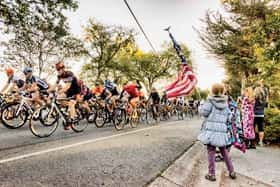 Roads less traveled
Roads less traveled
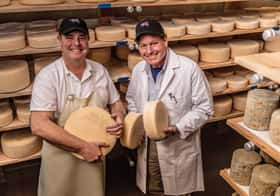 Sometimes tourists stray from the well-traveled path and discover hidden gems that locals treasure. Highway 116 goes from Petaluma through Sebastopol, Forestville and Guerneville and out to the coast. “It’s a wonderful way to discover Sonoma County,” says Vaughan. They might find the Seed Bank in Petaluma and take home something to grow or admire the junk art of sculptor Patrick Amyot and painter Brigitte Laurent on Sebastopol’s Florence Avenue. The Tibetan Gallery & Studio, also in Sebastopol, is a working studio, where thangka master Tashi Dhargyal is creating a two-story Buddhist scroll painting called a thanbhochi, which is slated for completion by the end of the year. Also on Vaughan’s list of favorites are Broadway Under the Stars at Jack London State Park and hiking on local trails. “I like to hike early mornings,” she says, adding that Sugarloaf Ridge State Park, north of Kenwood, has trails leading to a spectacular view of the entire Sonoma Valley.
Sometimes tourists stray from the well-traveled path and discover hidden gems that locals treasure. Highway 116 goes from Petaluma through Sebastopol, Forestville and Guerneville and out to the coast. “It’s a wonderful way to discover Sonoma County,” says Vaughan. They might find the Seed Bank in Petaluma and take home something to grow or admire the junk art of sculptor Patrick Amyot and painter Brigitte Laurent on Sebastopol’s Florence Avenue. The Tibetan Gallery & Studio, also in Sebastopol, is a working studio, where thangka master Tashi Dhargyal is creating a two-story Buddhist scroll painting called a thanbhochi, which is slated for completion by the end of the year. Also on Vaughan’s list of favorites are Broadway Under the Stars at Jack London State Park and hiking on local trails. “I like to hike early mornings,” she says, adding that Sugarloaf Ridge State Park, north of Kenwood, has trails leading to a spectacular view of the entire Sonoma Valley.
With a bit of luck, visitors might stumble across local events. At the Calistoga Harvest Table in September, Lincoln Avenue is closed to accommodate 1,000 feet of adjoining tables with food from local restaurants and wine stations all around. Tickets sell out early, but anyone can visit to enjoy a glass of wine, mingle with local residents and make a reservation at one of the restaurants. And the Calistoga Holiday Village and Lighted Tractor Parade, which takes place on December 2 this year, features a procession of illuminated farm vehicles, a Christmas-tree lighting and local Cabernets paired with gingerbread cookies. It was listed in USA Today as one of the top 10 parades in the country, Jackson reports. “If a visitor fell upon it, it would probably be a highlight of their whole vacation.” she says. “It’s good hometown fun that’s open to everyone.”
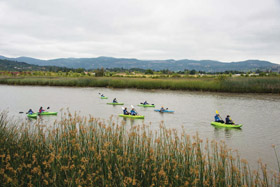 Near and far
Near and far
Napa is popular with day-trippers from San Francisco and the East Bay, who want to taste some good wine and have a nice lunch, and tourists from abroad, who have heard about Napa Valley and aspire to see it for themselves. A visitor profile in 2016 revealed that the largest percentage of international visitors is from China, with Canada coming in second and Australia and New Zealand third. Jackson observes that international visitors have more time to explore all that Northern California has to offer. “We explain that Napa Valley is just an hour from San Francisco,” she says. “We encourage people to spend a few days exploring the valley and always encourage midweek visits.”
Many Bay Area residents visit Sonoma, often because their families have been visiting for years to spend summer days on the Russian River, relaxing and having fun. Vaughan also sees people from Sacramento who want to escape the heat and Texans who are interested in wine. “The main international market is Canada and Mexico for us,” she says, but Australians love Sonoma as well. “We are laid back [in Sonoma County.] People like coming here because it’s casual,” she says.
 Much of that ambiance comes from Sonoma County’s rich agricultural history. “Only 6 percent of Sonoma County’s land mass is planted with grapes,” says Vaughan. It’s a reflection of the diversity in a county that offers seashore and cideries in addition to wine and has vibrant urban areas beside nature preserves. While Napa is synonymous with grapes, and fine wines are the lure, Sonoma has a wider variety of attractions. And so while the two counties lie side by side, they have much to differentiate them.
Much of that ambiance comes from Sonoma County’s rich agricultural history. “Only 6 percent of Sonoma County’s land mass is planted with grapes,” says Vaughan. It’s a reflection of the diversity in a county that offers seashore and cideries in addition to wine and has vibrant urban areas beside nature preserves. While Napa is synonymous with grapes, and fine wines are the lure, Sonoma has a wider variety of attractions. And so while the two counties lie side by side, they have much to differentiate them.
The result is a wealth of appealing choices, and so Monty Preiser advises visitors to split their time between Napa and Sonoma. “You do yourself a disservice to do one or the other. Just like evaluating a wine, it’s personal,” he says, and the best way to determine a preference is to get a taste of both. It’s good advice. No matter where visitors come from, they’re all looking for the same thing: a memorable experience. And by including Napa and Sonoma in their travel plans, they’ll get the best of both worlds.


